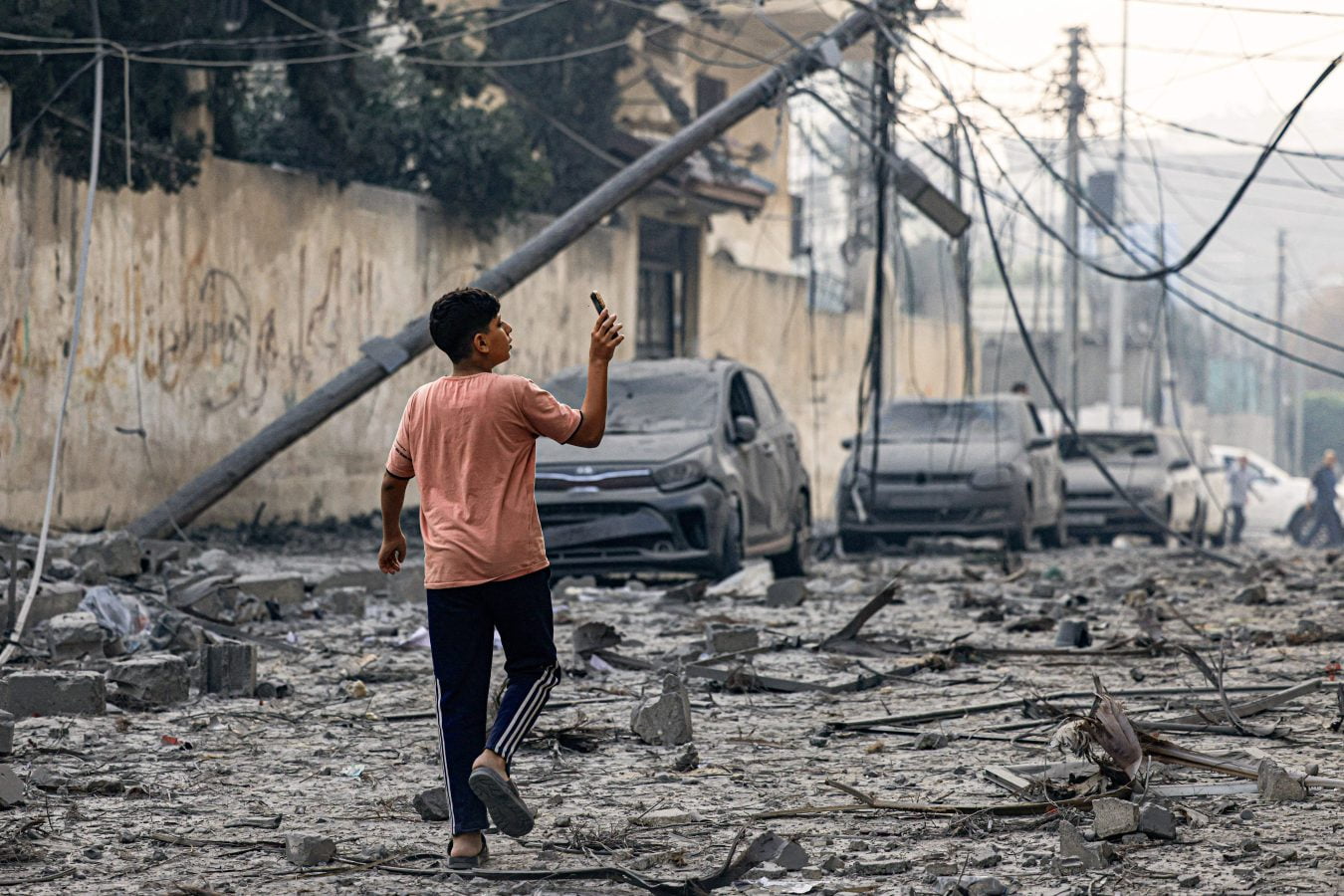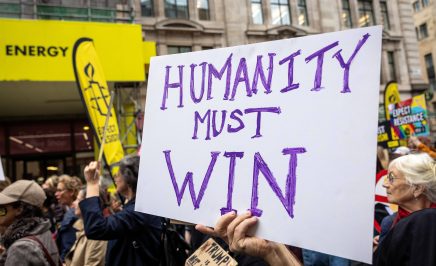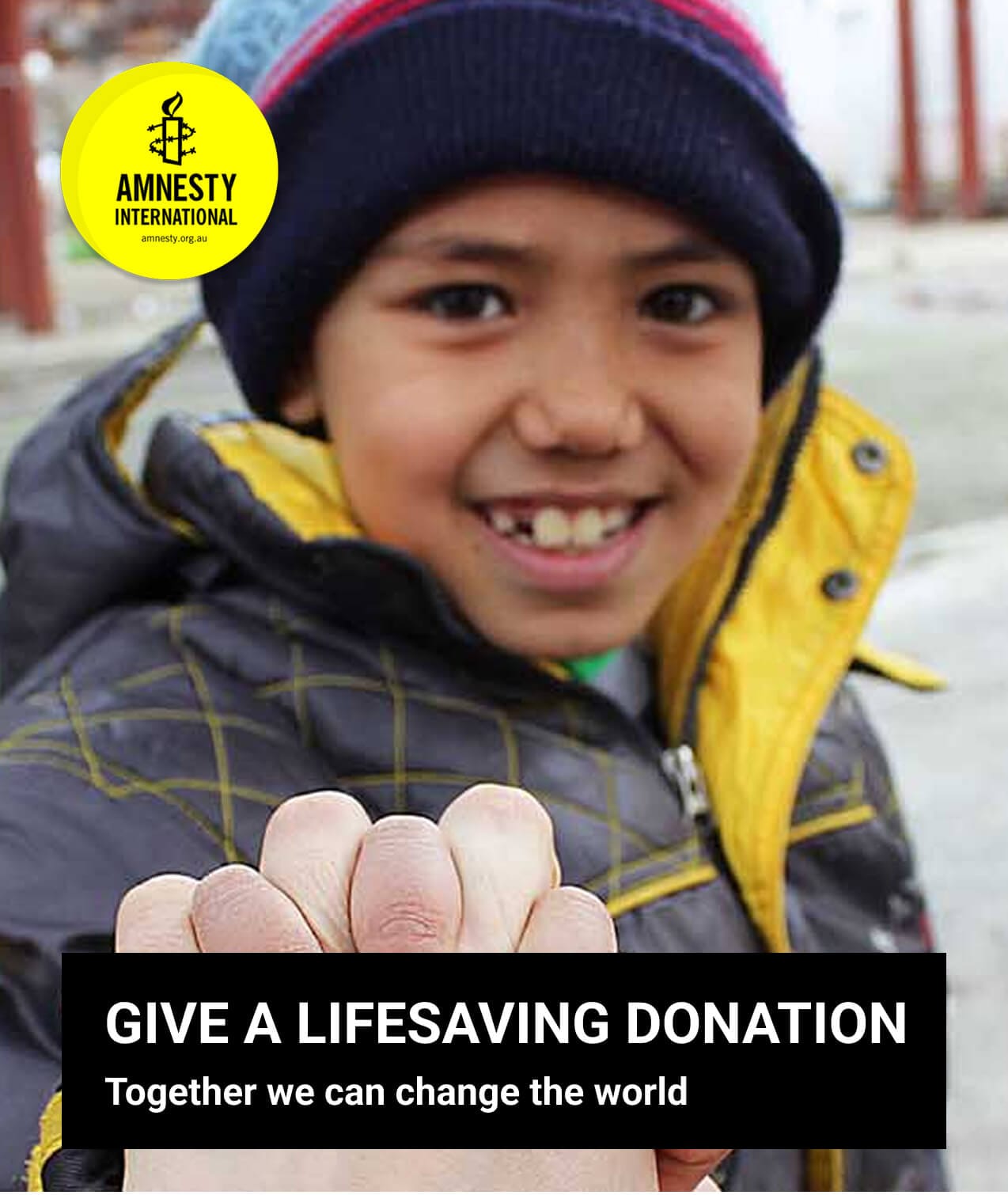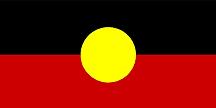The purpose of this resource is to empower you with the tools and knowledge needed to navigate information, conversations and the complexities of the crisis unfolding in Gaza and the challenges of mis/dis-information.
What we will cover?
 Understanding the concepts
Understanding the concepts
- Misinformation vs Disinformation
- What do misinformation and disinformation look like?
 How to fact check information when consuming content
How to fact check information when consuming content
- Tips to fact check when reading content on social media or through the media
- The Importance of Language
 Challenging Myths about the Israel/Gaza Crisis
Challenging Myths about the Israel/Gaza Crisis Putting Knowledge into Action
Putting Knowledge into Action
- Social Storming
- Uplifting the Voices of the Community
- Conversing to Change the Narrative
 UNDERSTANDING THE CONCEPTS
UNDERSTANDING THE CONCEPTS
Misinformation vs Disinformation

When distinguishing between misinformation and disinformation, it’s important to consider the intent behind the information source. Misinformation refers to false information that doesn’t necessarily intend to mislead, whereas disinformation refers to false information deliberately created to deceive1.
To determine whether a particular post or article is disinformation or misinformation, you should thoroughly investigate the source. Especially in the context of conflicts, it is crucial to identify whether the information you’re consuming is misinformation or disinformation. And it’s exactly what this resource is gonna help you do.
When you are approaching any sort of information, especially online, it is important to ask yourself questions concerning both the truthfulness and the intention of the message.
What do misinformation and disinformation look like?
Disinformation and misinformation can come in many forms, and be spread by the media, on social media, and in conversations with your family and friends. These can include2:
- False Narratives: Misinformation entails sharing inaccurate or incorrect information. Disinformation is sharing false contextual information: meaning the content shared is genuine but it is reframed in a misleading way to support a certain viewpoint.
For example: The idea that “Israel is doing everything it can to avoid civilian deaths” is conveying a false narrative.
In repeated cycles of conflict, Israeli officials have claimed the Israeli Defence Forces (IDF) does everything it can to avoid civilian deaths. They have said the IDF always gives advance warning of airstrikes. Amnesty has documented airstrikes by the Israeli army that violate international humanitarian law and caused mass civilian casualties. We have also documented airstrikes on people’s homes without warnings or evacuation orders being issued. Here is an example of Amnesty’s research.
- Manipulated and/or Misleading content designed to evoke emotion: Misinformation often strives to evoke certain emotions, like anger or frustration, rather than simply imparting information. Pay close attention to the language used and consider how it influences your emotional response.
- Outdated Information: Misinformation often involves sharing information that was once accurate but is no longer contextually relevant.. Further, always ensure that video and images that you consume on social media are correctly dated (and represent the specific location in discussion). For example, people on social media have shared videos that they say are from Gaza, but are actually from conflicts in other countries. Fact-checking organisations have noticed an increase in misdated images and footage in relation to the crisis unfolding in Gaza.
- Satire or Parody: On social media platforms, memes, satirical, and parody content can be taken out of context. It’s essential to engage in relevant fact-checking processes when encountering satire or parody even if it appears genuine or informative.
 How to Fact Check Information when Consuming Content
How to Fact Check Information when Consuming Content
Tips to fact check when reading content on social media or through the media
- Consider potential biases: When assessing a source, be mindful of any biases that could be influencing its content. Review previous posts and articles to get a comprehensive picture on the source.
- Appeal to sensationalism: Ask yourself when watching videos on social media whether the content describes specific events or facts or whether it is meant to prompt an emotional trigger for the audience. You have to harness critical thinking skills, and question information that may come across or overly sensational.
- Evaluate the source: Investigate the credibility of sources, and be cautious of sources with clear bias or a history of spreading false information.
- Be mindful of potential propaganda: Remember to critically assess any political affiliations sources may have as this may be reflected in the information they present.
- Examine the timing: Check that the information you’re reading is contextually relevant by checking its publication date.
- Avoid echo chambers: Don’t limit your exposure to information that aligns solely with your pre-existing views and challenge your own assumptions when diversifying the information and sources you engage with.
- Diversify your news sources: Rely on multiple sources to form an opinion rather than just one, and check whether something is being shared widely, and by verified sources. Fact-check claims by cross-referencing with multiple sources.
- Be careful of faulty logic: Some social media posts may contain logical fallacies or are built on premises that offer no proof. Do not jump to conclusions on facts or jump before clarifying the reasoning behind it.
- Report misinformation and disinformation: If you come across any misinformation or disinformation, report it to the platform or to fact-checking organisations, such as the RMIT ABC Fact Check site.
- Don’t share sources that contain disinformation: When you comment on or share these posts on social media, it can signal to the algorithm to prioritise them and more people will end up seeing them!
- When posting or sharing information about this issue beware of potential shadow bans: Since the outbreak of conflict in November, Amnesty International also received concerning reports indicating censorship of content from Palestinian accounts and advocates for Palestinian rights on several social media platforms. Later on in this resource we will post information on how to navigate shadow banning.
The Importance of Language
Language plays a critical role in shaping public perception. Dehumanising language is a tool often used to demean or delegitimise individuals or groups. Describing people as “animals,” beasts”, or “monsters” is a tool that has historically been used to erode empathy and excuse unthinkable acts. This is one of the most harmful and dangerous forms of propaganda, and it should always be called out. We must be on the lookout for terms that strip people of their humanity or perpetuate harmful stereotypes.
 Challenging Myths about the Crisis in Gaza
Challenging Myths about the Crisis in Gaza
This section aims to provide you with the knowledge to dispel common myths and misconceptions you might see on social media, in the media, and in conversations with friends and families. Read up on these myths before moving onto our next section where you can put this all into action.
Read Amnesty International Australia blog here, where we debunk eight popular myths
 Putting Knowledge into Action
Putting Knowledge into Action
Today, we’re facing even increasing misinformation and disinformation. Now you know what those concepts are, how to fact check, what some of the most common myths and misconceptions are, you can put that knowledge into action to overcome misinformation and disinformation.
You might read an article that quotes an Israeli official saying Israel does everything it can to avoid civilian deaths without questioning them. You might see a video on Twitter purporting to have been taken in Gaza, but see comments saying the video was actually taken in Syria in 20183. Now you can act!
1 – Social Storming
You can use the power of digital activism to delegitimise misinformation, call for a ceasefire, and counter hate speech and disinformation. Here’s how you can do it:
- Amplify credible content to demonstrate why we need a ceasefire and the importance of protecting human rights and civilians:
- Comment on social media posts with our ask to call a ceasefire. “Urgent action is needed to stop the ongoing crisis in Gaza. 🚨 People in Gaza are asking us to apply as much pressure as possible for a CEASEFIRE NOW!” or “We must demand an immediate ceasefire and put an end to the ongoing humanitarian catastrophe in Gaza!”
- Share articles and stories that reiterate messages from underrepresented voices and from credible sources, such as Al-Haq, B’Tselem, Human Rights Watch and Amnesty International.
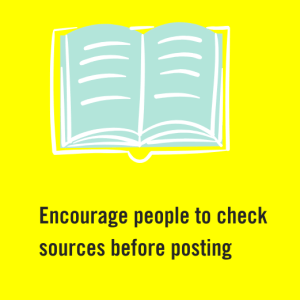
- Counter hate speech and disinformation and debunk myths:
- If you see someone sharing false information help them share factual information by sharing this resource with them,
- Counter any disinformation privately, rather than commenting on it, which leads social media algorithms to spread disinformation,
- Debunking is best done in a kind, personal, and if possible private, way to avoid spreading the message and amplifying the narrative
- i.e. If you are unhappy with how a specific media outlet has covered a story, send them a message or email: “Thanks for covering this important issue.
I thought you might like this [expert , verified or credible source] which says [reframe the narrative correctly]”
- i.e. If you are unhappy with how a specific media outlet has covered a story, send them a message or email: “Thanks for covering this important issue.
- Take practical steps to avoid spreading disinformation including hiding a post, unfollowing the account, and reporting the post for false information
- Ultimately create a safe space, where people are united by kindness and can change their mind and speak as one:
- Proactively post what is happening in Gaza and the response of the community in Australia in your own feed (rather than commenting on others’ posts). By doing so you can share stories of unity and compassion in this moment, rather than stories of division and hate to amplify the right kind of messages. Stories like this one.
- The most effective conversations are kind ones that are guided by emotions and followed by facts. Follow the model of Self, Us, Now.
2 – Uplifting the Voices of the Community
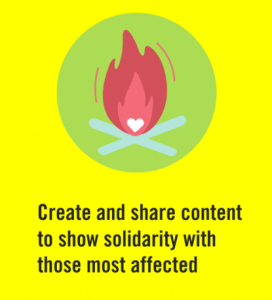
- Share the voices of people impacted by the conflict and those that want to reframe the narrative to move away from division and are asking people to come together to call for a ceasefire.
- Amplifying lived experience voices can be a transformative way to create empathy and understanding. Like, comment and share their posts. Liking, commenting, and sharing content can help increase visibility of Palestinian and Jewish voices. It also lets them know that their voices are being heard around the world.
- Follow people and organisations dedicated to promoting human rights, justice and peace. By following them, you can stay up to date on information about the situation, and contribute to reframing the narrative to foster the shared values that unite people taking action on this conflict.
- Dozens of journalists in Gaza have been killed while reporting on the conflict. Today, foreign journalists are only allowed into Gaza accompanying the IDF. Recognise and support the work of professional Palestinian journalists, their work is vital in raising awareness of what is happening on the ground in Gaza.
- When sharing content from other social media accounts, it is important to be aware of potential shadowbans4. Some tips to assist you in avoiding shadowbans whilst continuing to amplify underrepresented voices on this issue include:
- Be consistent and try to post as close to daily as possible.
- Post screenshots of images and screen records of videos + Customise the content when you are resharing it by adding thoughts, emojis etc.
- Try to share different kinds of content on the crisis in Gaza. Think of these 5 categories:
- PROOF (videos from Palestinians on the ground of what is happening and organisations that verify content),
- EDUCATION (informative posts explaining history, context and current events),
- ANALYSIS (views that address and dissect what is happening),
- UPDATES (statistics or daily recounts posted by credible media sources) and
- SOLIDARITY (posts involving that show solidarity with civilians in Gaza and Palestinian people)
- Keep in mind that while engagement is key (commenting, liking and re-sharing other peoples’ posts), you should keep hashtags to a minimum.
- Break up the algorithm with unrelated content every once in a while.
3 – Conversations to Change the Narrative
Talking to your friends and family about what is happening in Gaza and engaging in conversations with friends and family is a powerful way to address common questions, disinformation, and misconceptions. Have these conversations by actively listening, sharing the experiences of people impacted by this crisis, and by providing factual information. More importantly, approach these conversations with respect, empathy, and patience.
Keep in mind that alongside conversations you can also give people the tools to recognise and reject disinformation themselves, such as this toolkit or fact-checking resources.
Approach conversations while thinking about these 3 steps:
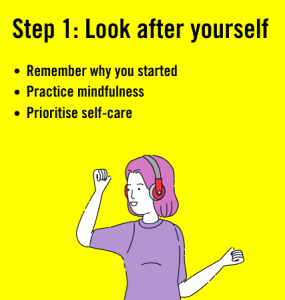
- Tune into you
- Remember what is your motivation behind initiating this conversation? How will it benefit you and the other person? What questions will it answer? What misconceptions will it overcome
- Take a few deep breaths and observe your emotions. Is this the right time for you to bring up this conversation?
- Know that some of these conversations are challenging, and you can always take a step back if you need to. Your wellbeing is important and activism needs to be sustainable.
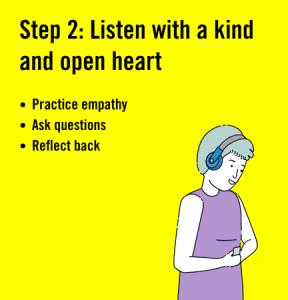
- Listening is as important as talking
- Practice empathy by trying to understand the perspective of the other person when they’re speaking,
- Ask questions that go beneath the surface of what someone is saying. What are the feelings and pre-conceptions behind their opinion?
- Demonstrate that you are paying attention by validating their emotions and reflecting their points back.
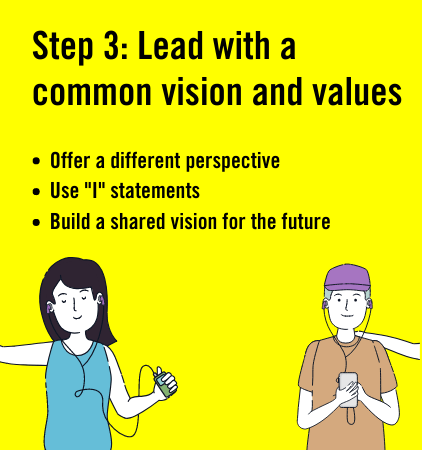
- Converse with the aim of creating union and not division
- Starting from shared values of protection of human rights and civilians, offer an alternative perspective on the current situation, based on credible information,
- Try and start your statement with “I” (I feel, I wonder) to keep the conversation open and respectful
- Highlight the kind of scenario that would be possible, something that you can both agree on because of your shared values. The end goal here is not necessarily to convince people you are right, but to achieve a greater understanding of where the other party has formulated their views from, whilst opening their mind to your ideas too.
With these steps in mind, you are ready to approach conversations with family and friends on this issue. Make sure you look at our Myth Busting Blog for some direction and help on how to approach common questions/discussion points on the Israel-Gaza crisis. And consult our Rights Revealed resource for further tips on Conversations on this issue.
Safeguarding your Wellbeing
As activists, we can face resistance against our campaigns, our viewpoints, or simply a broader resistance to change. This resistance can affect our work and well-being. Burnout and vicarious trauma can happen and it’s important to keep a look out for the signs in yourself and your friends. You can check out our Sustainable Activism & Self Care guide as a starting point to ensure that you are looking after yourself. Trying to convince people of your point of view can be disheartening and frustrating, but is essential for social transformation. However, harassment and/or abuse is NOT resistance and is unacceptable. This falls outside of constructive dialogue and should not be tolerated.
- National Library of Australia: https://www.nla.gov.au/faq/what-is-fake-news-misinformation-and-disinformation ↩︎
- Commons Library by HiveMind: https://commonslibrary.org/disinformation-and-7-common-forms-of-information-disorder/ ↩︎
- See https://www.reuters.com/article/factcheck-gaza-syria-idUSL1N2N01RD/ ↩︎
- Shadow banning occurs when your posts or activity aren’t viewable to other users, but you haven’t received an official ban or notification. In most cases, the user can still see their own content and have no idea no one else can see their posts. ↩︎
